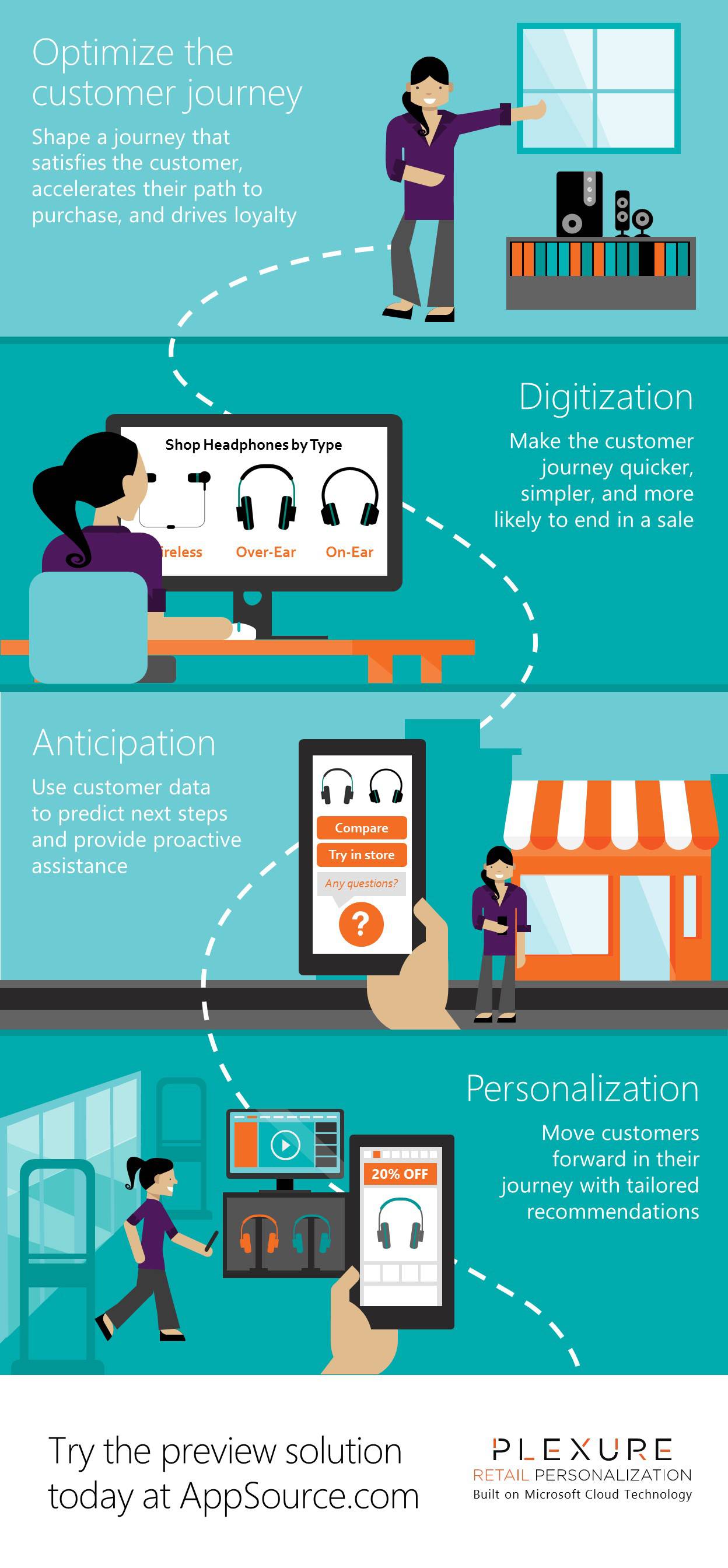Optimizing the customer journey with personalized engagement
Imagine you are planning to buy a pair of shoes, or try a new restaurant. You might do some research online, compare prices among competitors, consult reviews, or engage your social network for references. You probably add new brands to the list of contenders before narrowing it down and finally making a purchase. Thanks to online and mobile channels, the customer journey is increasingly complex. From a retailer’s point of view, it can be a long, unstructured process, with no guarantee of a purchase at the end.
That’s where customer journey mapping comes in. Using research about customer behavior patterns, companies are trying to understand the winding roads customers may take between consideration and purchase. Once retailers understand the steps and touchpoints in that progression, they can strategize on how to shape the journey that satisfies the customer, accelerates their path to purchase, and drives loyalty along the way. To stay on the leading edge, retailers need to actively guide their customers through a journey that is mutually beneficial for both parties.
How to forge a better path
The first step to improving the customer journey is digitization. Consider how much easier it is to research a product online, use an app to deposit a check, or make a purchase with the click of a button. Digitizing as many touchpoints as possible makes the customer journey quicker, simpler, and more likely to end in a sale. Digital improvements like adaptive displays can enhance the in-store experience as well, so it’s important to create seamless omnichannel engagement across mobile, online, and in-store channels.
Another key to enhancing the journey is to leverage data to anticipate customer desires. The Oakland-based solar panel retailer Sungevity collected customer data over time in order to identify common needs. They discovered that their customers want to see personalized energy savings projections, have conversations with sales reps, and get references from other customers. So the company provides all of those services not just when asked—but proactively, in a logical order, at the click of a button. Making the journey painless for the consumer encourages them to make their final purchase with you instead of a competitor.
Finally, make the journey as compelling as possible by personalizing engagement at every touchpoint. By collecting public data, customer history, and even live data like weather and time of day, you can generate a recommendation tailored to a particular customer that moves them forward in their journey. The more relevant the recommendation, the more likely it is to end in a purchase and drive retention in the long term. According to Gartner, organizations that incorporate personalization into digital commerce will increase revenue up to 15 percent by 2018. But personalization is not just for digital channels—IoT technology can bring personalized push notifications and adaptive displays to physical stores as well.
[inlinequote]Marketers that deliver personalized experiences are getting double digit returns in marketing performance.[/inlinequote]
Retail Personalization from Plexure
The Retail Personalization solution from Plexure helps companies orchestrate a tailored, proactive customer journey. Using data and analytics, the solution gives retailers the ability to make the correct inferences about customer preferences and automatically prescribe personalized recommendations. Marketers can decide which offers to drive under certain conditions and engage customers with personalized content across mobile, online, and in-store channels. Plexure’s technology also adapts recommendations to real-time conditions like weather, time of day, and local events.
McDonald’s used Plexure’s solution to drive more than a million app downloads in a week. In its journey mapping process, McDonald’s determined that shortening transaction time could increase customer satisfaction and loyalty. So the company used their app to streamline the browsing, ordering, and payment process. They used beacon technology to reach nearby app users with a customized menu and offers based on their past purchases, weather, and time of day. The improved journey was not only valuable for the customer, but it allowed McDonald’s to collect information like real-time store traffic, item popularity at each store at different times of day, and the effectiveness of promotions. With these insights, the company can better target their offers and plan inventory.
Try it yourself
A digital-first, proactive, personalized experience is key to putting your customer on a journey that leads to a successful purchase and long-term loyalty. Want to learn more about Retail Personalization? Check out the solution on AppSource today.
LinkedIn: ShiSh Shridhar
Twitter: @5h15h





